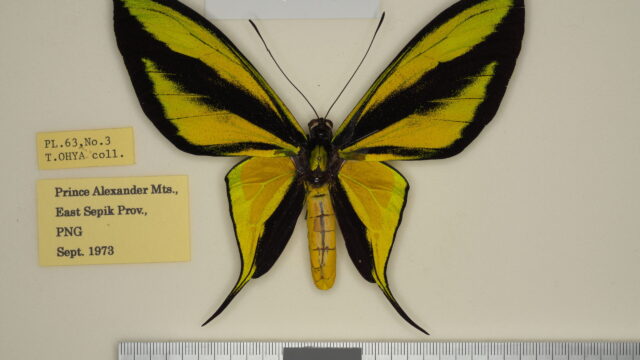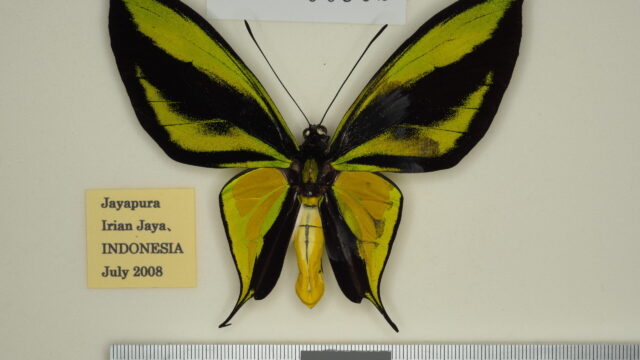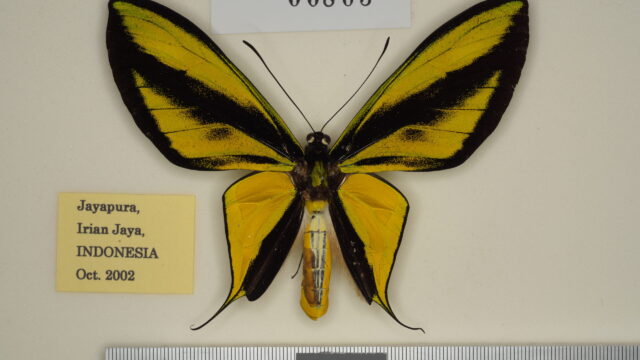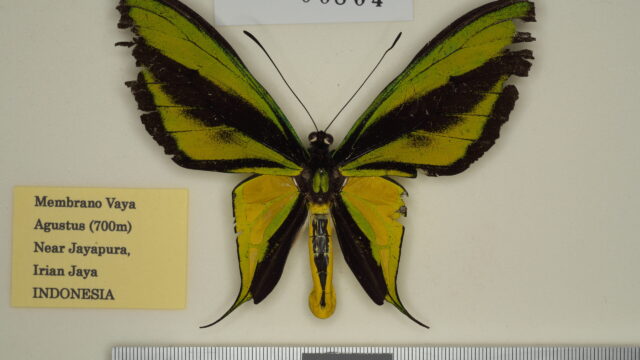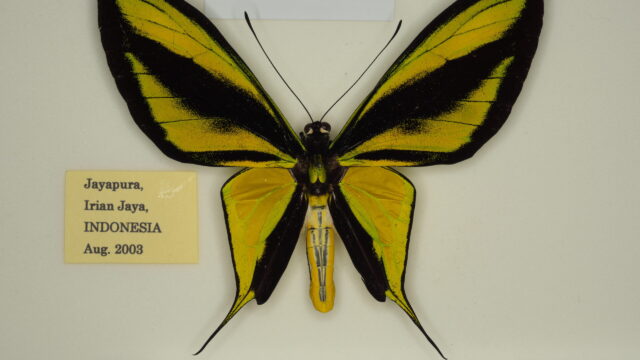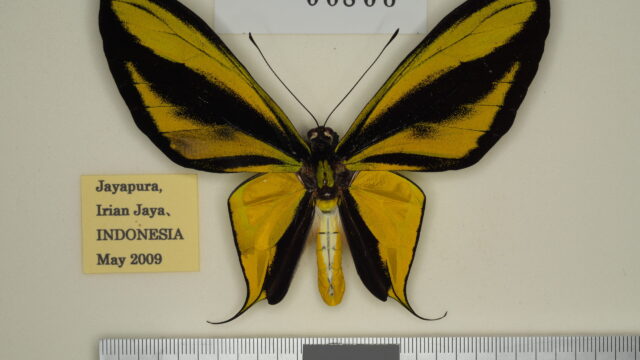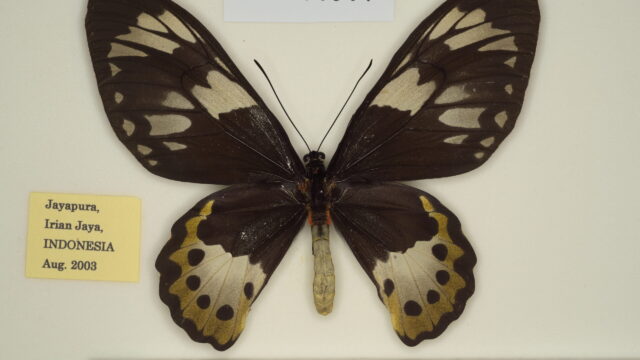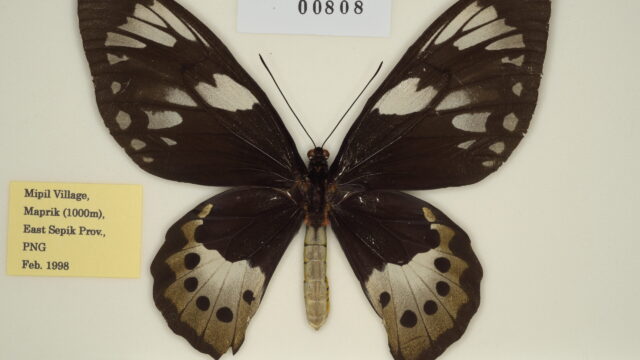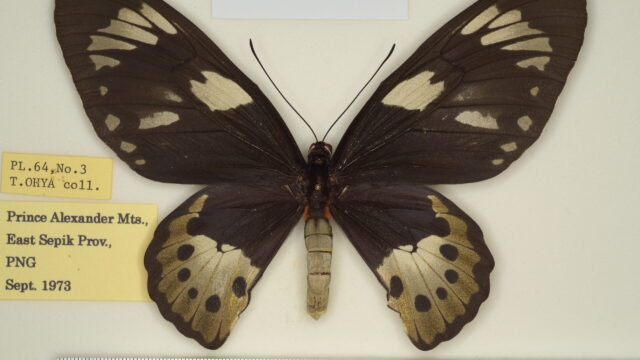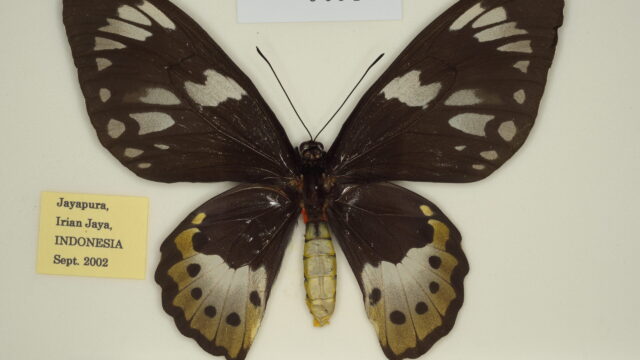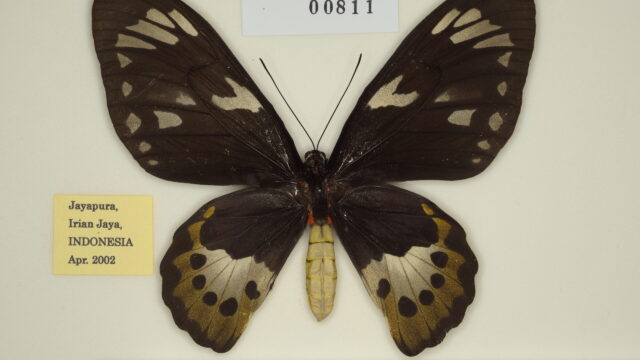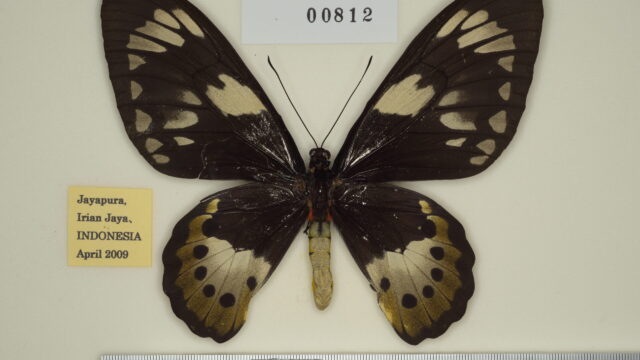6. Ssp. borchi Haugum & Low, 19747) [♂, ♀]
(Distribution) [Map. 38]
INDONESIA [Irian Jaya] Takar, Jayapura, Masi-Masi Is.; PNG [WSP] Vanimo, Bewani, Rainuk, Torricelli Mts. (2000 ft), Angugunak, Nuku, [ESP] Frieda River Airstrip, Ambunti, Prince Alexander Range (Drikikir, Maprik), Wewak, Kairiru Is.
(Episodes of discovery and original description)
The specimen used for the original description was collected by Borch on June 16, 1973 at an elevation of 2000 feet in the Torricelli Mountains and was in the possession of Low, who has now donated it to the British Museum for storage. The subspecies name is a dedication to the collector Borch.
(Characteristics)
This subspecies occurs in the northern part of the main island of New Guinea, at relatively high altitudes.
(Spotted pattern)
♂:Many individuals are relatively large. Wing width is narrower than nominotypical ssp. paradisea. The apex of HW tends to be prominent and angular, the outer margin tends to be straight. Femur is yellow.
♀: The ground color of the wing is rather pale, and FW have large spots, especially discal spots, some of which have three (many subspecies have one or two). HW pale band is white with yellowish brown submarginal area, but bright yellow on the underside. Femur yellow.
(Variation)
♂-f. jeanpierrei Deslisle, 20121): [Aberrant FW pattern] Enormous invasion of iridescent scales. The cubital band considerably extended and almost fused with the radial band; consequently black median band vestigial. Resembles the polar type of ssp. detanii ♂-f. bankoi.
♂-f. aurifluoides Haugum & Low, 19798): [FW/HW discoloration] The color of patches is deep gold. (➡paradisea )
